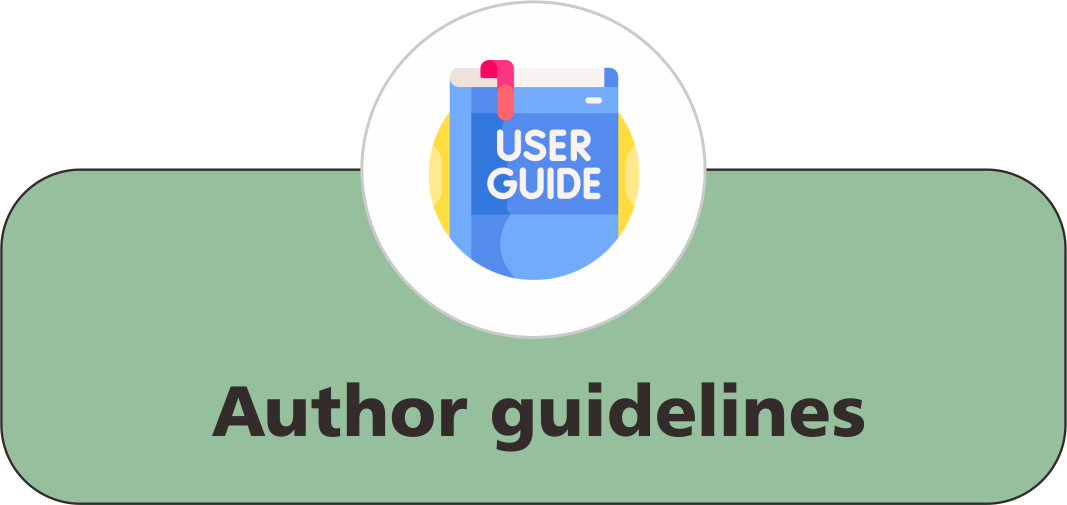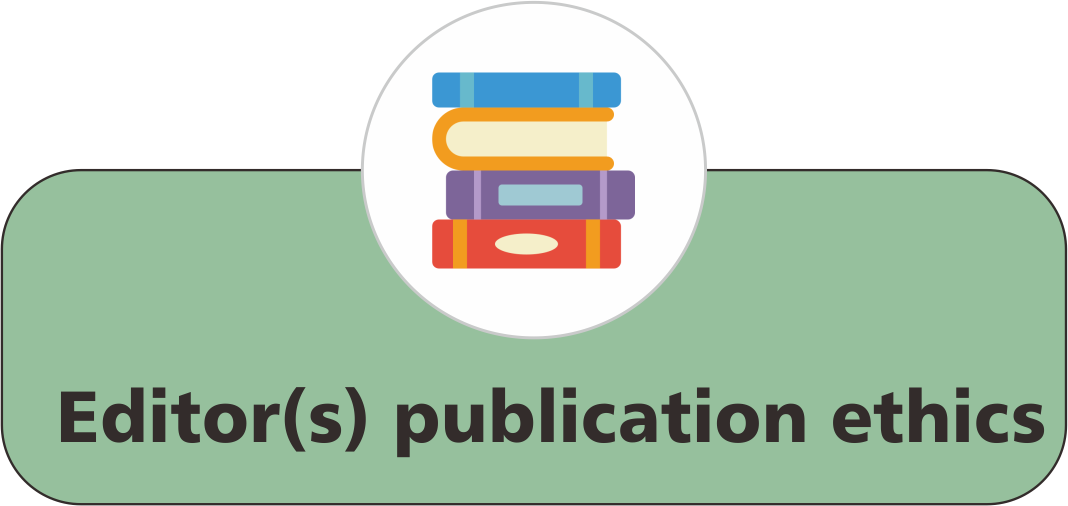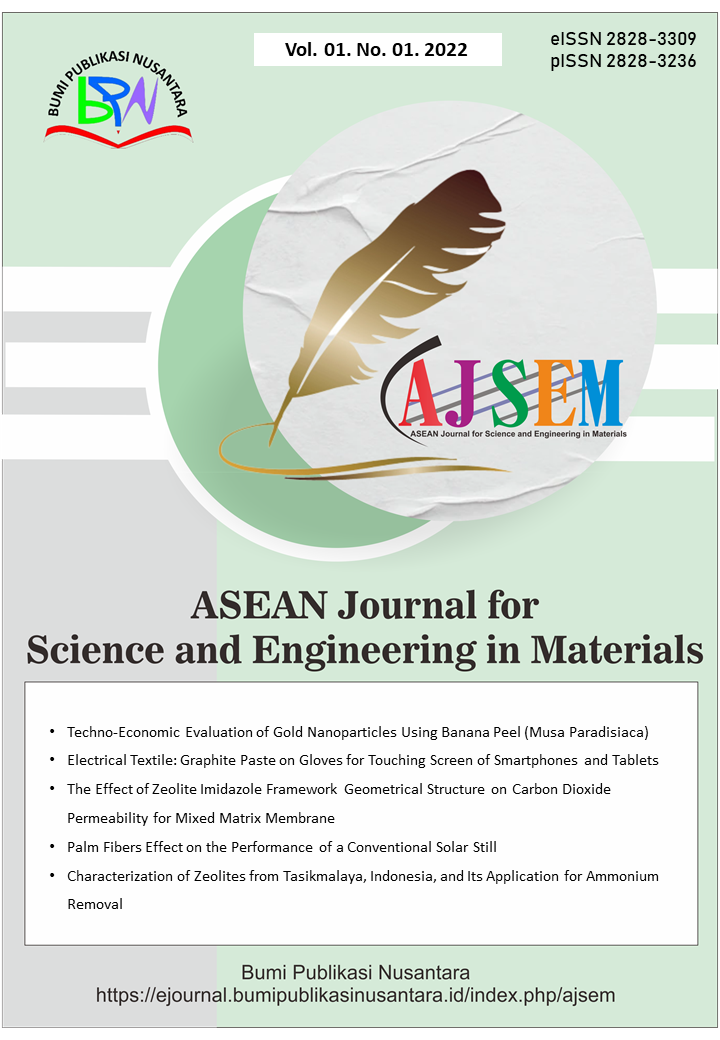Photocatalytic Removal of Toxic Metals from Tannery Wastewater using Green Synthesized Zinc Oxide Nanoparticles
 ), James Dama Habila(2), Idongesit Edem Okon(3), Patricia Adama Ekwumemgbo(4),
), James Dama Habila(2), Idongesit Edem Okon(3), Patricia Adama Ekwumemgbo(4),
(1) Ahmadu Bello University
(2) Ahmadu Bello University
(3) Ahmadu Bello University; Nigerian Institute of Transport Technology
(4) Ahmadu Bello University
 Corresponding Author
Corresponding Author
Abstract
Keywords
References
Abbasi, M., Rafique, U., Murtaza, G., and Ashraf, M. A. (2018). Synthesis, characterisation and photocatalytic performance of ZnS coupled Ag2S nanoparticles: A remediation model for environmental pollutants. Arabian journal of chemistry, 11(6), 827-837.
Aga, B., and Brhane, G. (2014). Determination the level of some heavy metals (Mn and Cu) in drinking water using wet digestion method of Adigrat Town. Technology Enhancement and Emerging Engineering Research, 2(10), 32-36.
Bahiru, D. B. (2020). Determination of heavy metals in wastewater and their toxicological implications around eastern industrial zone, Central Ethiopia. Journal of Environmental Chemistry and Ecotoxicology, 12(2), 72-79.
Bernard, E., and Ogunleye, A. (2015). Evaluation of tannery effluent content in Kano metropolis, Kano State Nigeria. International Journal of Physical Sciences, 10(9), 306-310.
Bhatnagar, M.K., Singh, R., Gupta, S., and Bhatnagar, P. (2013). Study of tannery wastewaters and its effects on sediments of river Ganga in special reference to heavy metals at Jajmau, Kanpur, India. Journal of Environmental Research and Development, 8(1),56-59.
Boruah, P. K., Yadav, A., and Das, M. R. (2020). Magnetic mixed metal oxide nanomaterials derived from industrial waste and its photocatalytic applications in environmental remediation. Journal of Environmental Chemical Engineering, 8(5), 104297.
Briffa, J., Sinagra, E., and Blundell, R. (2020). Heavy metal pollution in the environment and their toxicological effects on humans. Heliyon, 6(9), e04691.
Cheraghi, M., Lorestani, B., and Yousefi, N. (2009). Effect of waste water on heavy metal accumulation in Hamedan Province vegetables. International Journal of Botany, 5(2), 109-193.
Dan’Azumi, S., and Bichi, M. H. (2010). Industrial pollution and heavy metals profile of Challawa River in Kano, Nigeria. Journal of Applied Sciences in Environmental Sanitation, 5(1), 23-29.
Deepali, K. K., and Gangwar, K. (2010). Metals concentration in textile and tannery effluents, associated soils and ground water. New York Science Journal, 3(4), 82-89.
Ferreira, C. R., and Gahl, W. A. (2017). Disorders of metal metabolism. Translational science of rare diseases, 2(3-4), 101-139.
Fouda, A., Hassan, S. E. D., Saied, E., and Azab, M. S. (2021). An eco-friendly approach to textile and tannery wastewater treatment using maghemite nanoparticles (γ-Fe2O3-NPs) fabricated by Penicillium expansum strain (Kw). Journal of Environmental Chemical Engineering, 9(1), 104693.
Gong, F., Chen, J., Han, X., Zhao, J., Wang, M., Feng, L., and Cheng, L. (2018). Core–shell TaOx@ MnO 2 nanoparticles as a nano-radiosensitizer for effective cancer radiotherapy. Journal of Materials Chemistry B, 6(15), 2250-2257.
Kalsoom, A., and Batool, R. (2020). Biological and nonbiological approaches for treatment of Cr (VI) in Tannery Effluent. Emerging Eco-friendly Green Technologies for Wastewater Treatment, 18, 147-170.
Khan, S. A., Noreen, F., Kanwal, S., Iqbal, A., and Hussain, G. (2018). Green synthesis of ZnO and Cu-doped ZnO nanoparticles from leaf extracts of Abutilon indicum, Clerodendrum infortunatum, Clerodendrum inerme and investigation of their biological and photocatalytic activities. Materials Science and Engineering: C, 82, 46-59.
Khan, S. H., and Pathak, B. (2020). Zinc oxide based photocatalytic degradation of persistent pesticides: A comprehensive review. Environmental Nanotechnology, Monitoring and Management, 13, 100290.
Khan, Z. I., Ahmad, T., Safdar, H., Nadeem, M., Ahmad, K., Bashir, H., and Dogan, Y. (2020). Accumulation of cobalt in soils and forages irrigated with city effluent. Egyptian Journal of Botany, 60(3), 855-863.
Naseem, T., and Durrani, T. (2021). The role of some important metal oxide nanoparticles for wastewater and antibacterial applications: A review. Environmental Chemistry and Ecotoxicology, 3, 59-75.
Nur-E-Alam, M., Mia, M. A. S., Ahmad, F., and Rahman, M. M. (2020). An overview of chromium removal techniques from tannery effluent. Applied Water Science, 10(9), 205-227.
Okon, I. E., Anweting, I. B., and Danzarami, D. A. (2023). Effect of soil heavy metal concentrations on early growth performance of Cowpea (Vigna unguiculata) and groundnut (Arachis hypogea) seeds from Uyo, Nigeria. Journal of Materials and Environmental Science, 14 (5), 602, 612.
Okon, I. E., Anweting, I. B., and Nwokem, N. C. (2022). A study on heavy metals pollution levels in water and sediment of River Kubani Dam, Zaria, Nigeria. Pacific Journal of Science and Technology, 23(2), 107-116.
Oruko, R. O., Selvarajan, R., Ogola, H. J. O., Edokpayi, J. N., and Odiyo, J. O. (2020). Contemporary and future direction of chromium tanning and management in sub-Saharan Africa tanneries. Process Safety and Environmental Protection, 133, 369-386.
Raizada, P., Sudhaik, A., and Singh, P. (2019). Photocatalytic water decontamination using graphene and ZnO coupled photocatalysts: A review. Materials Science for Energy Technologies, 2(3), 509-525.
Reda, A. H. (2015). Study on the pollution levels of trace metals from modjo tannery effluent in the surrounding river water and soil. Science Journal of Analytical Chemistry, 3(5), 56-60.
Salem, S. S., Mohamed, A., El-Gamal, M., Talat, M., and Fouda, A. (2019). Biological decolorization and degradation of azo dyes from textile wastewater effluent by Aspergillus niger. Egyptian Journal of Chemistry, 62(10), 1799-1813.
Shaibu, A. N., and Audu, A. A. (2019). Evaluation of physiochemical parameters and some heavy metals from tannery effluents of Sharada and Challawa Industrial Areas of Kano State, Nigeria. Nigerian Journal of Basic and Applied Sciences, 27(2), 162-171.
Todorović, Z., Polić, P., Đorđević, D., and Antonijević, S. (2001). Lead distribution in water and its association with sediment constituents of the" Barje" lake (Leskovac, Yugoslavia). Journal of the Serbian Chemical Society, 66(10), 697-708.
Ugulu, I. (2015). Determination of heavy metal accumulation in plant samples by spectrometric techniques in Turkey. Applied Spectroscopy Reviews, 50(2), 113-151.
Ye, W., Liu, H., Lin, F., Lin, J., Zhao, S., Yang, S., and Van der Bruggen, B. (2019). High-flux nanofiltration membranes tailored by bio-inspired co-deposition of hydrophilic g-C3-N4 nanosheets for enhanced selectivity towards organics and salts. Environmental Science: Nano, 6(10), 2958-2967.
Yusuff, R. O., and Sonibare, J. A. (2004). Characterization of textile industries’ effluents in Kaduna, Nigeria and pollution implications. Global Nest: International Journal, 6(3), 212-221.
Article Metrics
Abstract View : 350 times
: 350 times Download : 148 times
Download : 148 times
Refbacks
- There are currently no refbacks.
Copyright (c) 2025 Bumi Publikasi Nusantara

This work is licensed under a Creative Commons Attribution-ShareAlike 4.0 International License.









